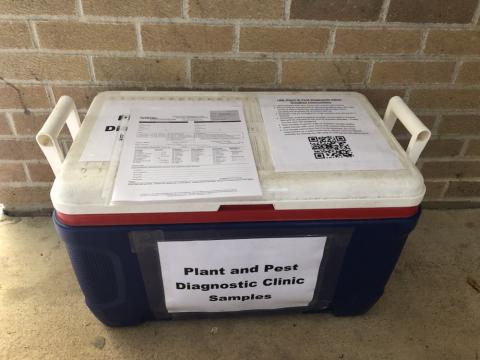July 2020 Disease Reports from the UNL Diagnostic Clinic
July 16, 2020
Diseases in corn, soybean, and wheat have been confirmed in parts of the state based on samples submitted to the UNL Plant and Pest Diagnostic Clinic from July 1 through July 15.
Plant and Pest Diagnostic Clinic – Updated Submission Procedures
July 9, 2020
As the growing season continues, the Plant & Pest Diagnostic Clinic is here to serve Nebraska growers by helping correctly identify weeds, insects, and plant diseases that are popping up. Due to Coronavirus, there are new recommendations for submitting samples.
Plant & Pest Diagnostic Clinic Adjusts to COVID-19 Disruption
March 25, 2020
While COVID-19 related issues have hindered normal procedures, the Plant & Pest Diagnostic Clinic will continue to provide diagnostic support and management recommendations through pictures and description of symptoms when possible.
Soybean Disease Update
March 19, 2020
Plants under stress due to environmental factors, such as extreme temperature and moisture are more susceptible to disease, and many were under stress due to the unique environmental conditions in 2019.
Crop Diseases Reported by the UNL Plant and Pest Clinic
October 18, 2019
Root, crown and ear rots lead the list of corn and soybean diseases reported in samples submitted to the UNL Plant and Pest Diagnostic Lab from October 1 to October 17.
Stalk Quality Concerns Widespread in Areas of Nebraska
September 27, 2019
The effects of late planting and stressful growing conditions throughout much of the season are showing up now in poor stalk quality in corn. Growers are encouraged to scout fields and harvest those most at risk of lodging first. Here's why and what to look for.
Late Season Soybean Diseases Widespread in Areas of Nebraska
September 13, 2019
Record rainfall during August and continued wet conditions into September are much to blame for the flush of diseases Nebraska’s soybean crop has been experiencing. Here are some of the most common diseases at this time and information on managing them.
PP&DC Disease Reports
August 9, 2019
Corn and soybean diseases confirmed by the Plant, Pest and Diagnostic Clinic and reported by district.







